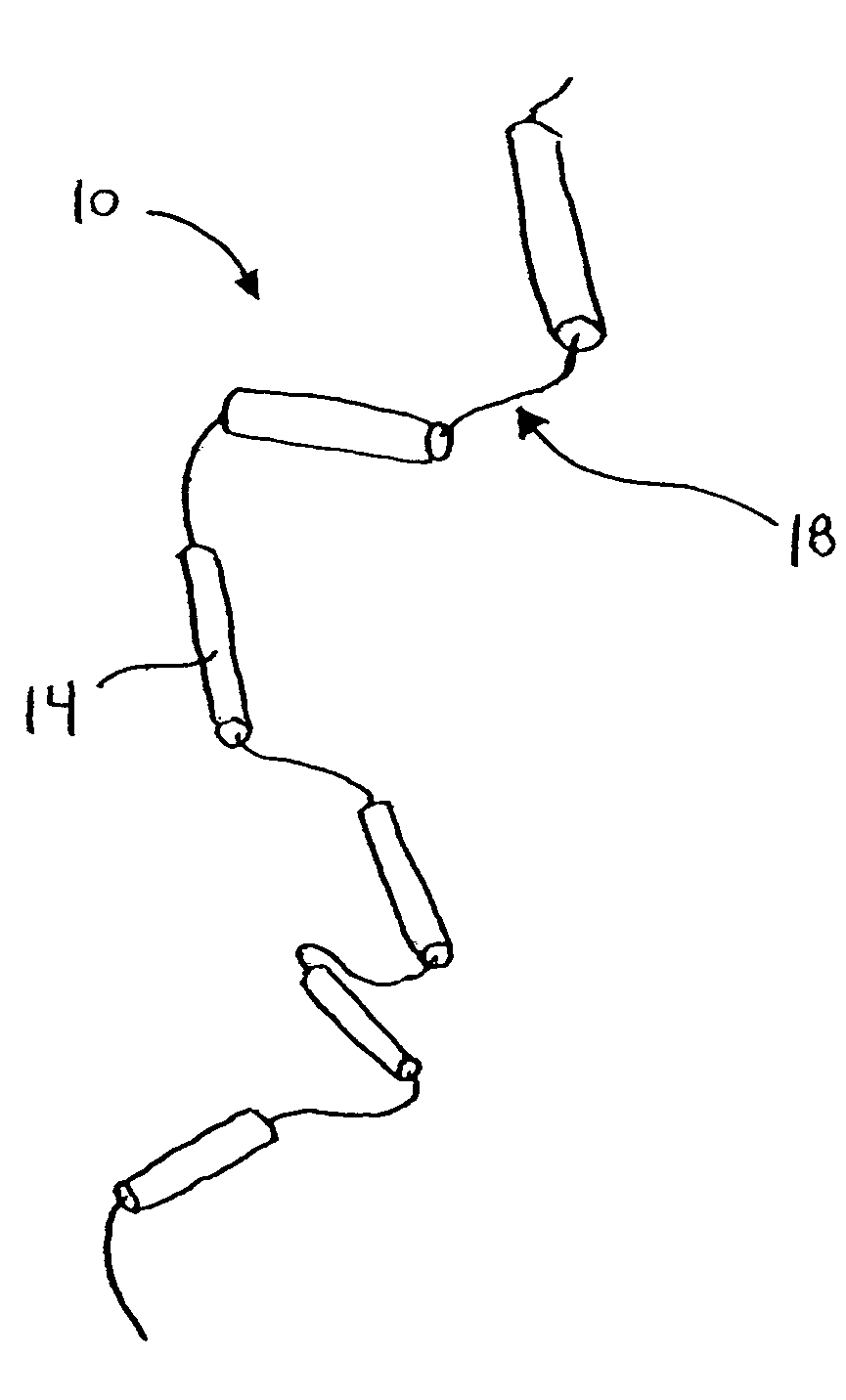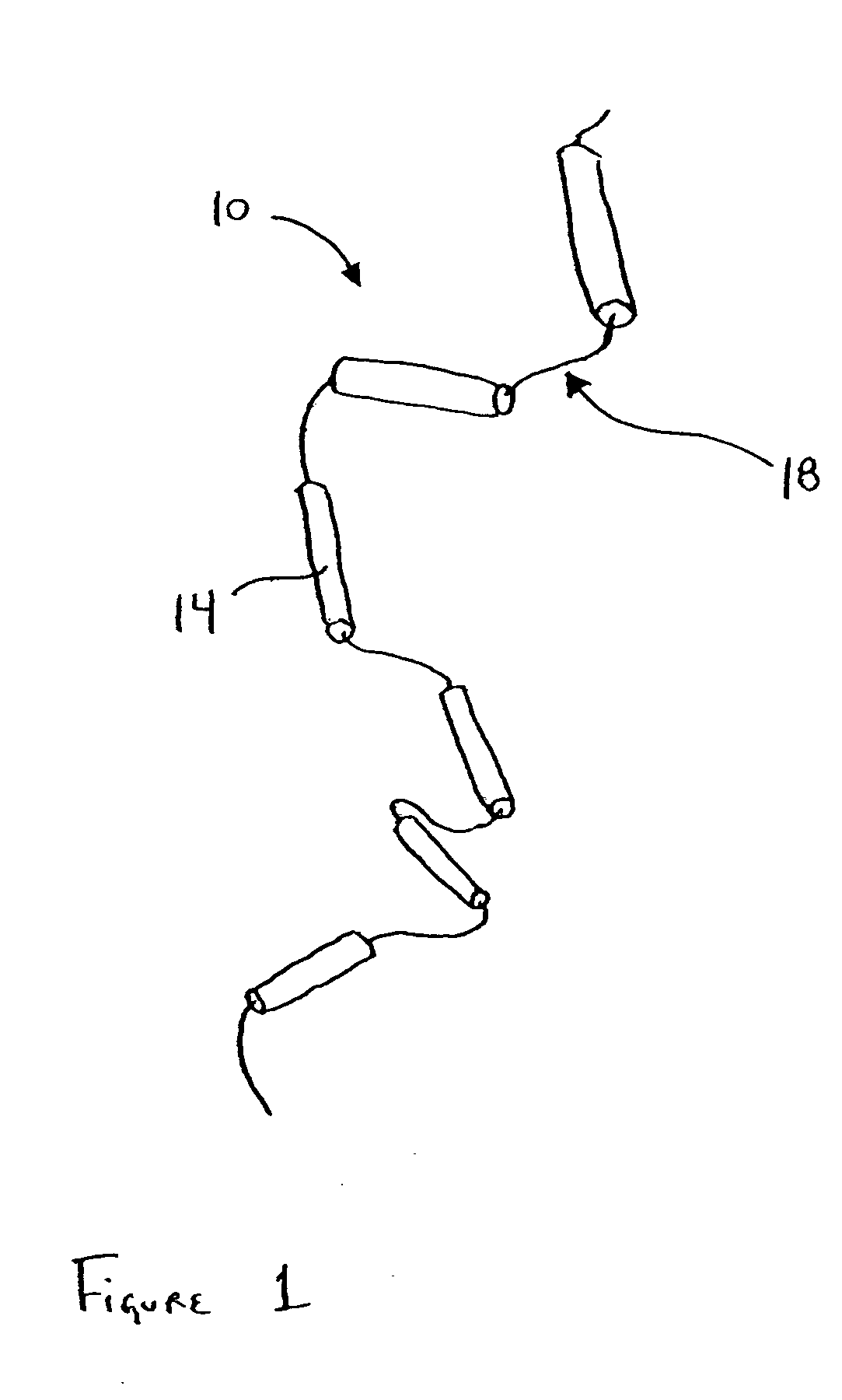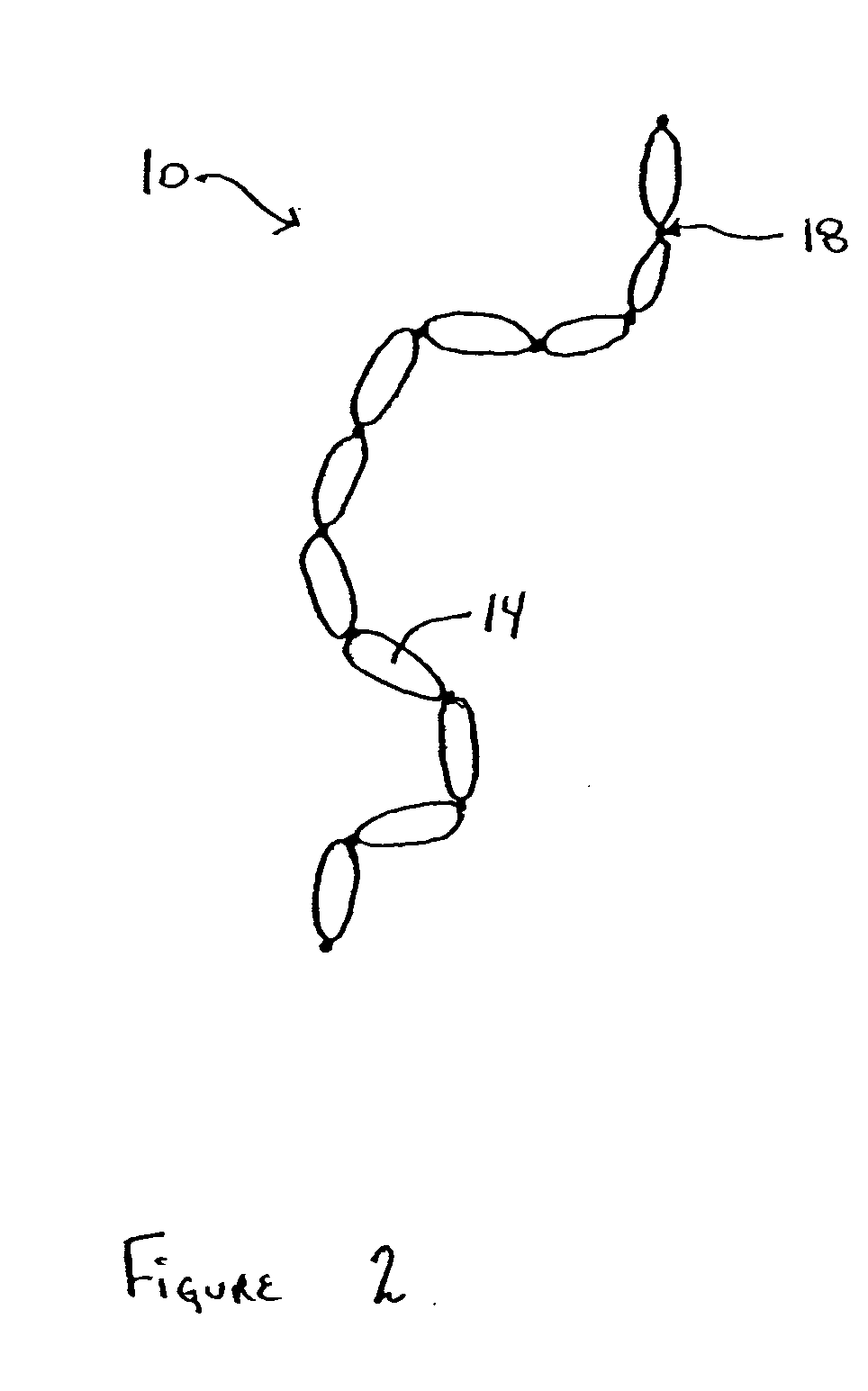Surgical implant
a surgical and implant technology, applied in the field of medical devices, can solve the problems of ineffective implants, requiring follow-up or additional medical procedures, and the size of the presently available implants,
- Summary
- Abstract
- Description
- Claims
- Application Information
AI Technical Summary
Benefits of technology
Problems solved by technology
Method used
Image
Examples
first embodiment
[0030] Referring to the drawings, FIG. 1 illustrates the present invention, and particularly, linked implant 10. As illustrated in FIGS. 1-4, linked implant 10 normally comprises two or more implant bodies 14 attached to a string 18. In general, linked implant 10 is delivered to a location adjacent the target tissue (e.g., the esophageal lumen, superior to the LES). Linked implant 10 is then introduced into the target tissue, thereby bulking the surrounding tissue.
[0031] Implant body 14 can be formed of a variety of desirable, biocompatible implant materials suitable for bulking and supporting a target tissue. In a preferred embodiment of the present invention, the implant body is formed of a bio-remodelable, extra-cellular matrix. One suitable form of extra-cellular matrix is harvested from porcine or bovine small intestine submucosa (hereinafter “SIS”). SIS is a preferred material because it has special bio-remodeling characteristics. Because of these characteristics, SIS has been...
second embodiment
[0043] Referring to the drawings, FIGS. 15 and 16 illustrate the present invention, and particularly, tipped implant 110. As best seen in FIG. 15, tipped implant 110 generally comprises implant body 126 (often having a rough or non-uniform edge), and a smooth implant tip 114 having a penetrating portion and an expanding portion. As illustrated in FIG. 17, tip 114 also includes a proximal end having shank 132 with threads 134. As discussed in greater detail below, shank 132 secures implant body 126 to tip 114.
[0044] In general, tipped implant 110 is delivered to a location adjacent the target tissue (e.g., the esophageal lumen, superior to the LES) through the working channel of an endoscope. Tip 114 is then introduced into the target tissue such that the penetrating portion of the tip punctures the target tissue. As the tip is advanced into the target tissue, the expansion portion of the tip widens the puncture created by the penetrating portion, thus forming a cavity sized to recei...
PUM
 Login to View More
Login to View More Abstract
Description
Claims
Application Information
 Login to View More
Login to View More - R&D
- Intellectual Property
- Life Sciences
- Materials
- Tech Scout
- Unparalleled Data Quality
- Higher Quality Content
- 60% Fewer Hallucinations
Browse by: Latest US Patents, China's latest patents, Technical Efficacy Thesaurus, Application Domain, Technology Topic, Popular Technical Reports.
© 2025 PatSnap. All rights reserved.Legal|Privacy policy|Modern Slavery Act Transparency Statement|Sitemap|About US| Contact US: help@patsnap.com



